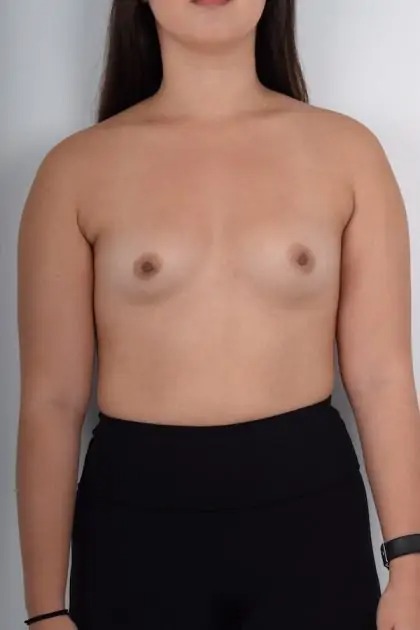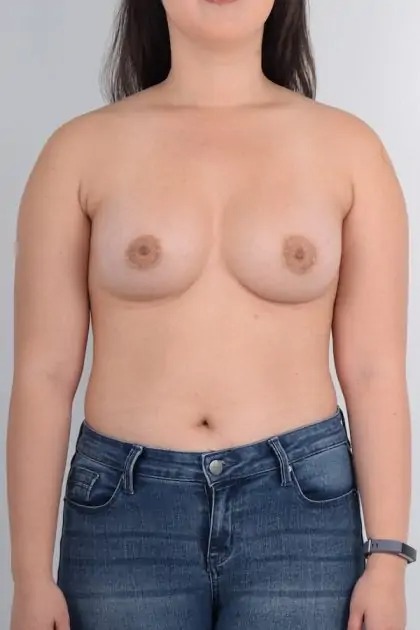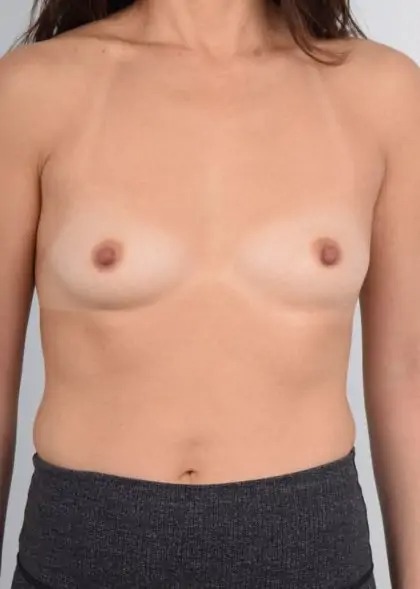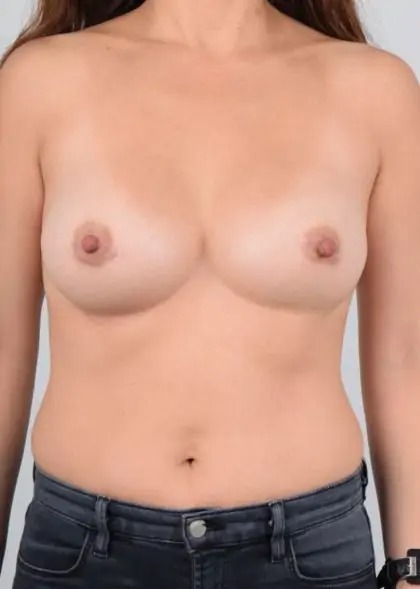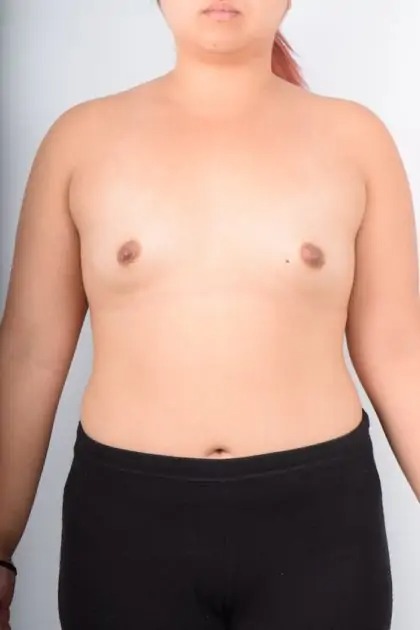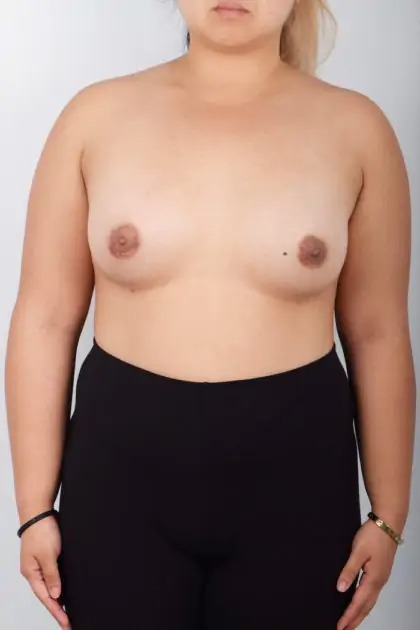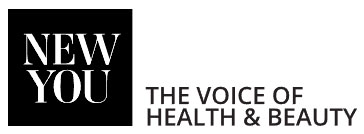Breast
 Also known as breast enlargement, breast implants, and popularly referred to as a “boob job”, Breast Augmentation is a surgical procedure that involves the enlargement of the breasts. The surgery may be performed to either treat breast ptosis (i.e., droopiness) or to acquire a more aesthetically pleasing upper body contour.
Also known as breast enlargement, breast implants, and popularly referred to as a “boob job”, Breast Augmentation is a surgical procedure that involves the enlargement of the breasts. The surgery may be performed to either treat breast ptosis (i.e., droopiness) or to acquire a more aesthetically pleasing upper body contour.
The three main causes of breast droopiness are breast gland shrinkage (resulting in a decrease in volume), breast gland enlargement (resulting in the breast itself drooping), and breast gland enlargement (leading to a loss in elasticity or stretching of the breast skin).
The 3 main ways to treat breast ptosis and droopiness are breast enlargement, excision of any droopy breast tissue and/or skin, and breast reduction performed in conjunction with a breast lift.
About Breast Surgery
Breast enlargement procedures involve the insertion of breast implants that push the breast tissue superiorly and fill the overall breast area. On the other hand, during a breast tissue and/or skin excision procedure, the breast size is maintained, but the droopy breast tissue and skin are surgically removed. This procedure may also involve either a periareolar breast lift or reduction where the tissue around the areola is removed to lift the breast. It is also applicable in minor breast droopiness, or a breast tissue lift and autoaugmentation, where the lower breast tissue is re-located to the central aspect of the breast in order to “autoaugment” or naturally lift the breast tissue. Meanwhile, breast reduction procedures are performed at the lower and outer aspects of the breast in order to decrease the breast volume while elevating the position of the areola.
COMMON INDICATIONS
Some common indications (i.e., something that is considered advisable or necessary to undergo a particular test, medication, or procedure) for this procedure include the following:
- Flat chests
- Small breasts
- Droopy breasts
- Sagging breasts
- Asymmetrical breasts
IDEAL BREAST SHAPE
While the ideal shape of the breast may vary based on personal opinion, there are objective categories to determine the ideal breast shape. The beautiful shape of Asian breasts is a teardrop shape, where the side-view outline from the neck to the areolar has to flow without sharp turns. When lying down with the body facing upward, the breasts should lean slightly outward with the areolas pointing outward as well. In addition, the breast should not maintain its teardrop shape but rather the outer portion of the breast should appear thicker and slightly flatter.
The average length of the two areolars is 18-22 cm, while the average length from the areolar to the folding line underneath the breast is 5-6 cm. The size of the breast will vary depending on the weight, length of the shoulders, natural breast size, and the patient’s desire. Usually, the desired size of the breast is 20-25cm larger than the waist size.
Breast Augmentation in Asians differs from breast augmentation in Caucasians due to the fact that Asians tend to scar more and Asians tend to have thicker skin than Caucasians.
In Asians, determining how the scar will appear after surgery is based on where the surgical incision is made and how much tension exists on the scar. Thus, a surgeon must have experience in deciding where the surgical incision site should be as well as an understanding of how to minimize tension during closure since tension is unavoidable with breast augmentation – due to the fact that the implant itself stretches the skin.
Thicker Asian skin does not allow breast implants to be positioned at the center of the breast. The thick lower breast skin and breast crease region do not stretch as much as that of Caucasians. By utilizing a traditional technique that is applicable for Caucasians, Asian breast augmentation tends to result in an implant that is placed more on the upper region of the breast. The result is a high upper breast fullness and insufficient lower breast. Thus, a natural-looking tear shape breast cannot be formed.
In Asians, a lower breast region pocket must be adequately dissected in two separate planes to allow the implant to fill the lower breast region. This helps create a natural-looking tear-shape breast in Asians. Thorough understanding of Asian skin elasticity and its effect on breast implant is required to produce a beautiful breast in Asians.
ANATOMY OF THE BREAST
The breast is mainly composed of adipose (fatty) tissue and glandular tissue (milk glands). The milk glands are interspersed throughout the breast, while the fatty tissue embraces them underneath to protect. The fatty tissue determines the shape and size of the breast. Underneath the breasts are pectorialis muscles, which function in movement of the chest, shoulder joint, and arms.
The size of the breast may change due to pregnancy, sudden weight loss, and aging process (skin stretching, ptosis due to gravity). This may result in droopy breasts. In addition, some patients have asymmetrical breast size, meaning the volume or shape of the breasts are different.
Pre-Operative Care
IMPLANT SIZE DETERMINATION
Implant size is determined after considering one’s overall physique (i.e., height, weight, hip circumference, chest circumference, breast skin elasticity, breast gland development, amount of breast subcutaneous fat), breast shape, and the patient’s desired breast size (i.e., average, larger than average, large). During consultation, extensive breast measurements will be taken. All these factors are collectively considered when deciding on implant size. Furthermore, Asian and Caucasian nude model pictures and actresses’ pictures are also evaluated with the patient to see what kind of image, mood, and/or feel different breast shapes and sizes create. Patients are also encouraged to insert breast implant sizers underneath their bra to get a feel of the range of implant sizes. Placing breast implant sizers help determine which volume implant one should choose.
BRA SIZE/IMPLANT SIZE COMPARISON
Determination of a desired breast size cannot be exactly correlated to bra cup size without inserting the implant. Women’s breasts differ in terms of amount of breast tissue present. Therefore, a 220 cc implant will not create a B cup in all women. One should insert a breast implant under one’s bra to get a feel of their desired size, but this does not necessarily offer an accurate translation to the actual implant being inside the breast. The amount of breast dissection itself also affects the overall breast size postoperatively. For example, if one wants to have a more mobile breast, then the same implant will produce a smaller breast than in a woman wanting a less mobile breast. Lastly, bra-manufacturing companies differ in bra size determination. Therefore, patients should not expect a 32 C from one bra company to be the same as a 32 C from another.
Immediately stop taking the following medications 2 weeks prior to your surgery date:
- Aspirin
- Plavix
- Coumadin
- Celebrex
- Fish oil/omega-3
- Herbal medication, red ginseng concentrates
- Any blood thinning medications
In case of prescribed medications, please inform the office. The prescribing doctor’s approval is required before discontinuing the medication.
Since breast augmentation requires general anesthesia, you need to refrain from eating or drinking (including water) at least 12 hours before the surgery. You are encouraged to take a shower and wash your hair before the day of the surgery. Please remove any metallic jewelry (earrings, necklaces, etc), nail polish on fingernails and toenails. Do not wear any makeup, deodorant, body creams, or oils on the day of the surgery. Please shave underarm hair before the surgery when undergoing transaxillary breast surgery. Hair may increase the risk of infection.
You must arrange a legal guardian or caregiver who will provide you transportation after the surgery. You will not be allowed to drive after the surgery.
Please take your prescribed medications as usual (excluding blood thinning medications) on the day of your surgery. Please inform the doctor if you have had cold, infection cough, or phlegm within one week prior to surgery. Please inform the nurse if your surgery date overlaps with your menstruation period.
Post-Operative Care
BREAST MASSAGING
After the surgery, you may need to massage your new breasts, depending on the type of implant that you have. Textured-type implants do not require massage because this type of implant is designed specifically to adhere to your own breast tissue. Massaging it will actually prevent your breast tissue from integrating into the implant; therefore, massage is not recommended for at least one month after the procedure.
For the smooth-type implant, massages may be needed. If massaging is indicated for you, then you will be instructed to do so 5 days after the surgery. If you experience discomfort during this time, then you can start the massage 1 week following your procedure. The massage should be performed 3 times a day (morning, daytime, and evening) for 1 month. You will be instructed if further massage is needed.
EXAMS/MAMMOGRAMS
Whether you have undergone breast surgery or not, you should have annual breast exams. The main purpose of the breast exam is to detect breast cancer. Annual breast exams should be performed for all ages, and all women past 35 years of age should also receive yearly mammograms. Mammograms can be used to check for breast cancer in women who have no signs or symptoms of the disease. This type of mammogram is called a screening mammogram.
Screening mammograms usually involve two x-rays of each breast. Mammograms can also be used to check for breast cancer after a lump or other sign or symptom of breast cancer has been found. This type of mammogram is called a diagnostic mammogram. Signs of breast cancer may include pain, skin thickening, nipple discharge, or a change in breast size or shape. It is important to inform the mammography facility about breast implants when scheduling a mammogram. The technician and radiologist must be experienced in x-raying patients with breast implants. Implants can hide some breast tissue, making it more difficult for the radiologist to detect an abnormality on the mammogram. If the technician performing the procedure is aware a woman has breast implants, steps can be taken to make sure that as much breast tissue as possible can be seen on the mammogram.
- Minimal activity for first 3 days after the surgery. Light walking is fine.
- Remember to position yourself as you have been instructed, with your head and shoulders elevated.
- Leave the bra in place as it helps with the swelling. At the time of the post-operative visit the bra will be removed.
- No heavy lifting, pushing or pulling for a minimum of one week.
- After 1 week, full range of motions with your arms is permissible; lifting is restricted to 5 pounds or less.
You can expect:
- To return to non-strenuous work within 3-7 days.
- Moderate discomfort, which should be relieved by the medications.
- Moderate swelling of the breasts and abdomen.
- Bruising around the breasts.
- Some bloody drainage on the dressings.
Call the office if you experience:
- Severe pain not responding to medications.
- Excessive swelling or swelling that is greater on one side than the other.
- A bright red spot on the bandage which continues to enlarge.
- Incisions that appear to be opening or becoming very red, hot to touch or containing pus.
- A fever higher than 101 degrees.
- Any signs of increasing firmness of one or both breasts.
As time goes by and your are healing, the following guidelines apply:
- You will have swelling for about a week before it begins to improve. The amount of bruising is different for each patient, as it is the length of time for it to resolve.
- Return to strenuous activities in 4-6 weeks.
- Final bra size can be determined within 10-12 weeks.
- If you notice any signs of increasing firmness of one or both breasts, even months after the operation, please make an appointment for evaluation.
- Certain types of bras are not recommended until at least 6 months after surgery. Check with your surgeon on what type of bra to purchase.
- After you are cleared to do so, you may wear a bra of your choice.




